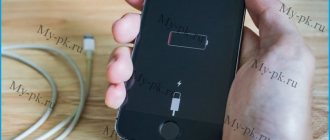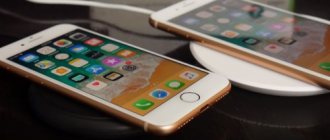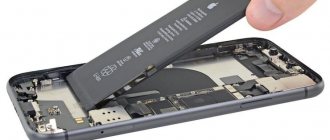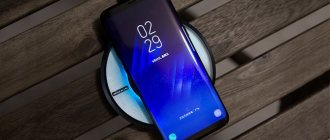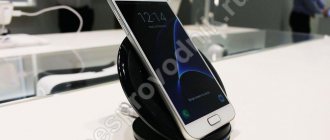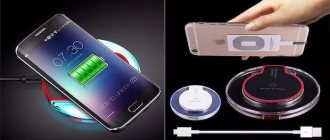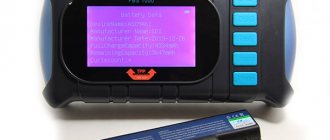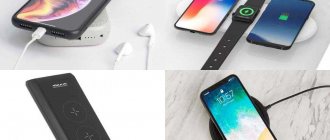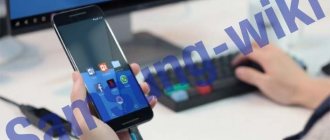Some people say that charging the device fast charging is bad, others teach not to worry - "Everything is fine", they urge not to trust the Internet. Where is the truth?
We propose to put an end to the issue of the harm of fast charging once and for all using scientific facts and practical research.
To do this, we turned to the work of German scientists who studied the features of charging lithium-ion batteries in normal and abnormal modes. They published the results in Science Direct under the number "S2352152 X16300 147" in February 2016. In addition, we compared practical experience with the knowledge base of the Battery University (links to publications below).
Fast charging protocols for 18650 Li-ion batteries from Sanyo, Sony and A123.
Can I charge my phone with fast charging?
Let's start with phones that initially support this function. Manufacturers present the ability to charge your device faster as an advantage, and this is true. After all, few people want to wait twice as long to charge their mobile phone to 100%.
What causes recharging to accelerate? If you compare a block of regular and fast memory, you will notice a difference in some indicators... Namely, in current strength and, sometimes, voltage. In a fast charging unit, their values can be 3, 5 and even 10 A for current, and 5, 9, 12 V for voltage. But the increased current should harm the phone battery, right?
Not really. Here we can rely on reviews from the owners of smartphones that support fast charging. In the vast majority of cases, they report that such recharging does not affect the battery capacity in any way, even after a couple of years!
An interesting question: how long does it take to charge your phone? Try to leave your opinion in the comments) We also recommend reading this article!
On the other hand, personal experience can hardly be considered significant evidence. Fortunately, a lot of research has been done by many scientists. And they all come to the conclusion that it is possible to use fast charging... After one year of active use of the phone (about 300 cycles), its battery capacity decreased by about 6-7%. We can observe similar indicators on smartphones that were constantly charged with a conventional charger.
That is, fast charging does not harm the phone in any way?
That's right, you can charge your phone with fast charging. But you should follow some rules. As you probably know, while charging your smartphone can get slightly warm. And the greater the current, the more heating occurs. Since the current power during fast charging is much higher, the battery will heat up more.
Of course, modern smartphones have temperature controllers, and if there are significant deviations from the norm, the charging power is reduced. It is worth keeping in mind that any microcircuit can fail (including the temperature sensor), so for maximum safety, manufacturers do not recommend charging the phone with fast charging if the room is too hot.
Additionally, they also advise removing the smartphone case. If the battery does overheat, at best it will lose a lot of capacity, and at worst it will spontaneously ignite or even explode (although this happens - extremely rarely!).
What happens if you use non-original fast charging?
In general, nothing bad will happen. The main thing is to buy a charger that supports exactly the fast charging standard that is installed in your device (for example, Quick Charge 3.0 for Qualcomm processors). Only in this case will it be possible to charge the phone.
You cannot connect a smartphone and a charger with different fast charging standards. Since, in addition to differences in current strength (if its values do not match, then you can use fast charging, because the power controller will not allow the permissible power of electricity to be exceeded), the voltage values may also be different. Most smartphones can accept a charge of five volts, but, for example, some Samsung models have a standard voltage of up to 20 V (four times more!). In such a situation, it is probably inevitable that the battery will break after the first charge.
Does Quick Charge harm your smartphone battery?
Manufacturers of mobile devices that support fast charging are constantly working to improve this technology. Today, gadgets that work with the latest generation of Quick Charge 4.0 are appearing on the market. An example of this is Qualcomm's chipset called Snapdragon 845, present in many flagships last year. However, even the 3rd version of Quick Charge still deserves some attention for some rather important innovations.
First of all, we should note a significantly improved approach to battery power management, which allows you to dynamically adjust the incoming voltage in the range from 3.2 to 20 volts. Innovative INOV technology controls the current strength, which significantly reduces the likelihood of overheating. Also, as the battery charge increases, the energy output through the power supply decreases.
In today's latest version, Quick Charge 4.0, even more attention was paid to the safety of the smartphone battery, reducing its wear and tear. In addition to a set of new methods for monitoring the temperature of the device, a system for checking cable quality was added. With its help, the charging procedure through a failed adapter is blocked. There is also support for the USB Power Delivery standard.
Based on all of the above, we can judge the very high level of reliability and safety of the latest versions of smartphone fast charging. Why does the battery wear out in some mobile devices? Misuse of Quick Charge capabilities is often the culprit. Thanks to accelerated charging up to 50%, which takes only half an hour, many users get used to replenishing the battery only up to half. As a rule, this leads to a gradual decrease in capacity.
- You need to monitor the temperature conditions in which the smartphone is located during fast charging, and keep the phone away from sources of additional heat.
- It is not recommended to use Quick Charge power supplies on gadgets with chipsets that do not support this technology. This can cause the battery to swell and fail due to severe overheating.
- You need to charge your phone only using an original certified device or a high-quality and correctly selected analogue.
Is it possible to charge an iPhone with fast charging?
Many iPhone users are thinking about replacing the standard charger with a faster one. Let us immediately note that if you have an iPhone 11 or 12 pro max, then you do not need to buy a new charger unit. It is already included, and the owner of the iPhone can immediately start using it. Fast charging is completely safe for the battery and we wrote about this in detail above.
It's another matter if you, for example, have 6 or 7 iPhones. A simple five-watt charger (only 1A) is initially provided for them. Of course, there can be no talk of any fast charging in this case. If you try to connect it to fast charging, then, as we already reported above, the iPhone will accept the minimum for which the connector chip is programmed (for versions 5, 6 and 7 - only 1 A). At the same time, iPhone 10 can be charged much faster (up to 10 watts).
However, the original charger from Apple will not harm any device from the same company, because they were all designed so that a charger with fast charging for the iPhone XR can constantly charge a rather old iPhone 7 without any problems.
How does a battery wear out?
The only resource a battery can lose is charging cycles
I propose to start with a definition of the concept of harm, which can guide us when studying such a phenomenon as fast charging.
Battery life is measured in the charging cycles that it can withstand before physical wear occurs and it can no longer store energy in accordance with its declared capacity. As a rule, modern smartphones have a service life of 500 cycles. One cycle is a complete discharge and full charging of the smartphone. That is, in order for the counter to decrease by one, the battery needs to be discharged to 0 once and charged to 100%. The loss of available cycles is a conditional harm, since no scars or cracks appear on the battery from charging too quickly.
How good is Samsung's fast charging compared to the competition?
The battery simply has no other resources that it could lose other than capacity. In this sense, the association with a kettle on which scale appears is very appropriate. The more water you boil in a kettle, the thicker the layer of scale it will become and the less water it will be able to hold in the future. But while a kettle can be boiled with citric acid, this trick won’t work with a battery.
Is it possible to charge a regular (old) phone with fast charging?
If you are the owner of a regular smartphone that does not have fast charging, then you can still charge your phone with fast charging. The fact is that when such a memory is connected, it, roughly speaking, “sends” a kind of request. And if the phone can accept increased current power, then it processes it. After which, it returns the signal to the charger unit again: ready, the phone is charged with fast charging.
But things could go differently. If the smartphone does not have an accelerated charging function, then it will not respond to the charger’s request and the electricity will flow with much less power. Of course, in technology everything is somewhat more complicated, but we have explained the principle of operation to you. You can safely connect your old phone to fast charging - it will charge at normal speed. By the way, do you know how to charge a regular phone quickly, even without fast charging?
What if you use such a memory all the time?
Don't worry, this won't lead to anything special. We already said that fast charging will charge your old phone at normal speed. And it won't even warm up. You don’t have to worry and charge your regular smartphone with fast charging.
5 3 Votes
Article rating
Tips to extend battery life
Use our recommendations, thanks to which the battery will wear out less.
1.Keep the charge level between 15-90%.
2.Do not leave your smartphone charging all night.
3. Carry out calibration once every month and a half.
4.Use original power supply and USB cable. If your original charging unit is broken or lost, purchase a third-party gadget, but only from a reliable manufacturer. Don't buy cheap Chinese chargers. Also pay attention to the power of the non-original charger: it must match the characteristics of the original battery.
5.Do not overheat your mobile device with heavy games or resource-intensive applications. Use the cover only when necessary, as dense material also contributes to overheating. The temperature should not rise above 38 degrees. You can measure the processor temperature using special applications that are available on GooglePlay.
6.Use your phone to a minimum in extreme cold. If it is below -20°C outside, try not to use the device and carry it in the inside pocket of your jacket.
7.Refrain from charging your phone through your computer's USB port. The smartphone will take a very long time to charge, and the battery will overheat. Use only standard 220 Volt outlets or power banks.
